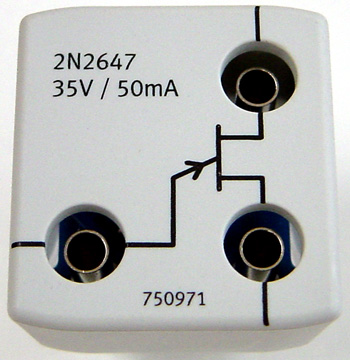Unijunction transistor

Similar to a normal bipolar transistor, a unijunction transistor (UJT) provides three terminals. Unlike a bipolar transistor however, but similar to a diode, there is only one p-n junction. In practice, it acts like a controlled diode that, despite the constant polarity of the applied voltage, can be made conductive or non-conductive. Because of the two B terminals, the UJT is also called double-base diode.
If a small, positive control voltage against B1 is applied to the emitter, nothing happens at first. If the control voltage is raised further and a certain potential is reached, the UEB1 voltage will collapse abruptly, and at the same time the emitter current will jump to a certain value. In a sense, the UJT has been fired.
This behavior is very similar to a thyristor. A UJT is cleared when the emitter current falls below a certain threshold.